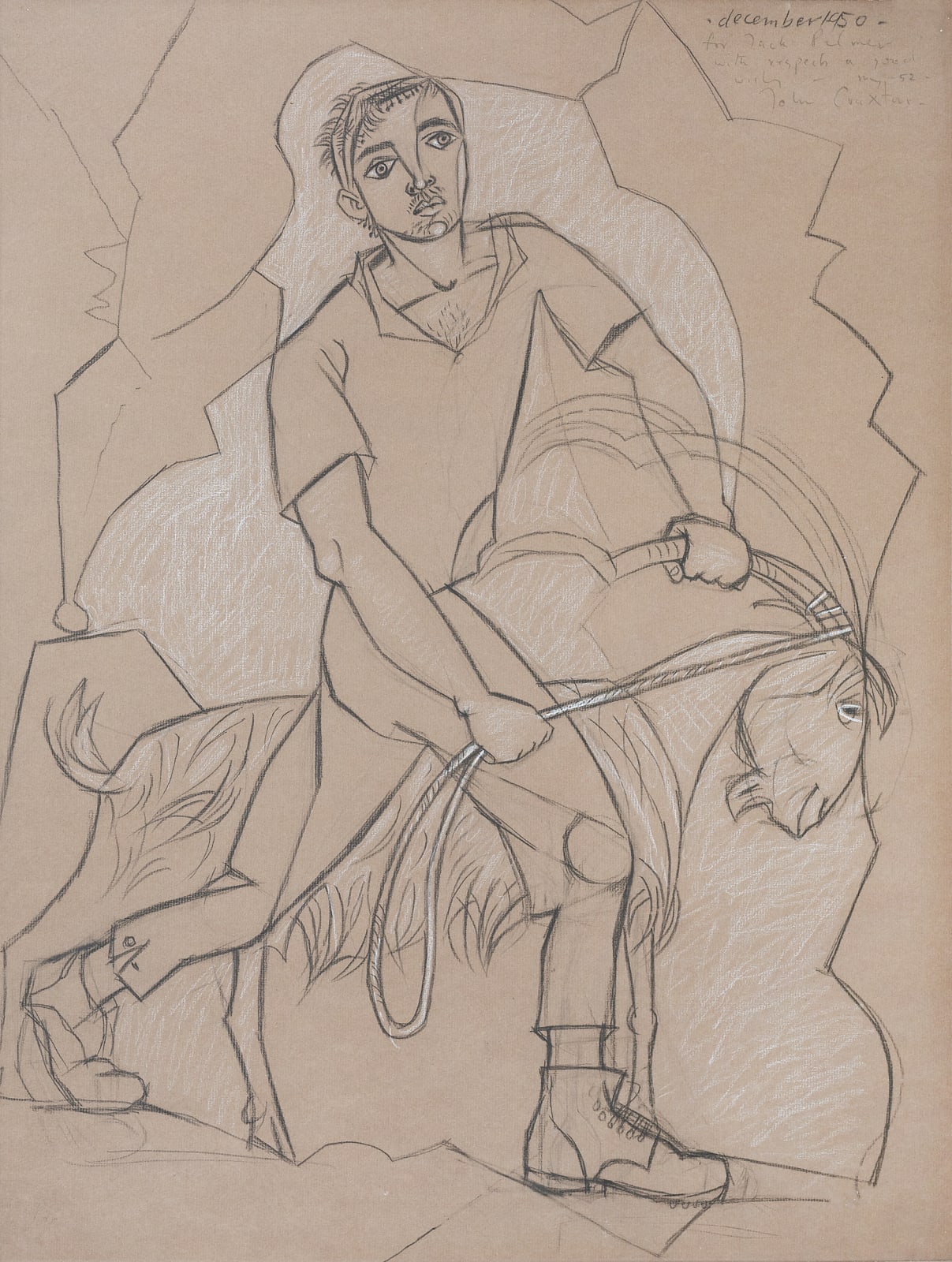John Craxton
The goatherd, 1950
black and white chalk on buff paper
61 x 48 cm
Sold
The present work is a study for Craxton’s painting Four Figures in a Mountain Landscape of 1950-51, now in the Bristol Art Gallery. The picture is now considered to be...
The present work is a study for Craxton’s painting Four Figures in a Mountain Landscape of 1950-51, now in the Bristol Art Gallery. The picture is now considered to be a seminal painting in Craxton’s oeuvre marking a turning point in his career and evidence of the radical effect Greece had had on his style following his move there. In an Apollo Magazine review of the Craxton show at Salisbury Museum in 2016, Maggie Gray notes of the work: ‘The large painting is an unashamedly Arcadian depiction of Aegean life, woven with colour, which encapsulates much of what changed in Craxton’s art after he went away.’ It is thought that the initial studies for this work were made on a visit to the mountains of Crete in the summer of 1950. By the time of this study in December of that year, Craxton had found some resolution in the work and the study of the goatherd is remarkably similar to its eventual depiction on the left had side of the final painting. A letter dated 18 February 1976 from Jeffrey Daniels, curator of the Geffrye Museum also confirms its Jack Wood Palmer provenance: ‘Having at last managed to make contact with John Craxton, who has been working in Edinburgh, I am now in a position to throw very little light on the inscription on your drawing. Apparently Jack Wood Palmer was curator of the Minories Gallery, Colchester during the 1960s and then went to Penzance where he died about four years ago.’
